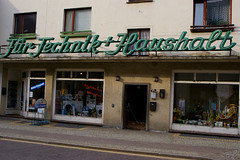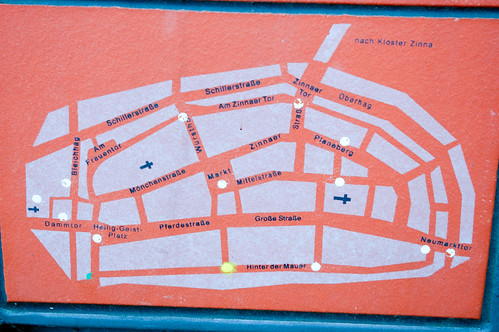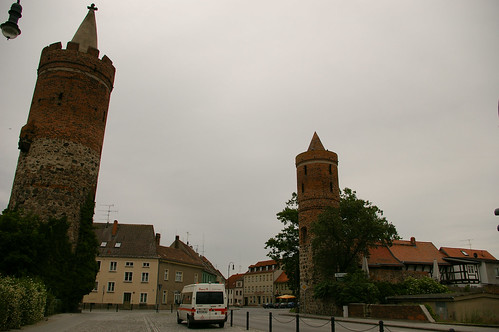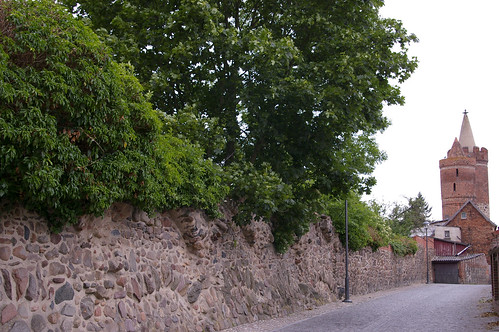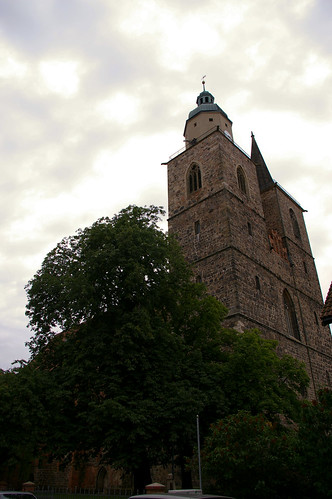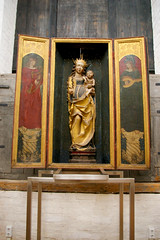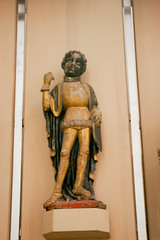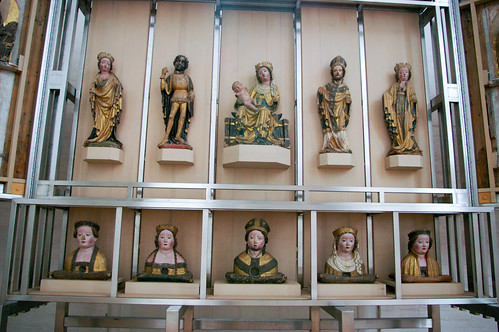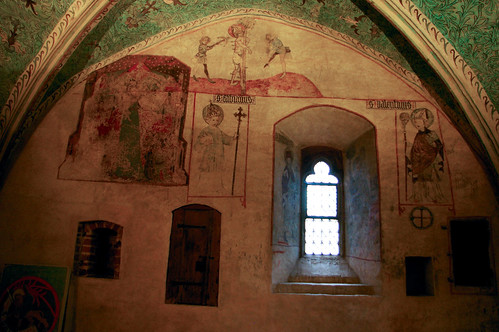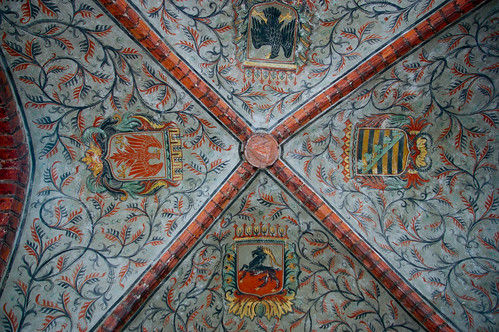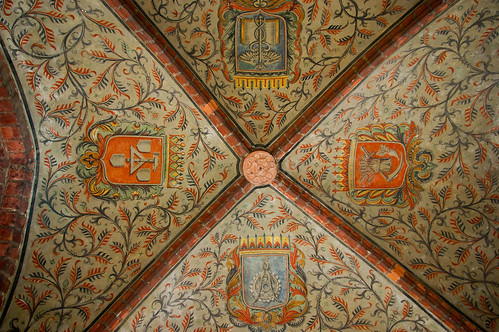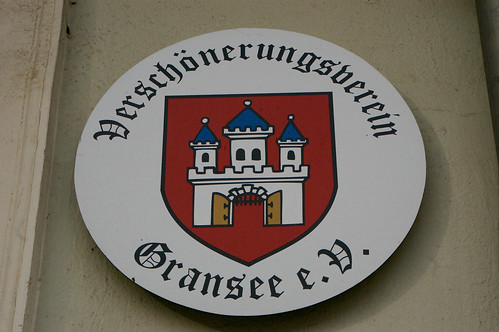
The same day that I had off (March 26) and went to photograph the Swans in Neurippen and the Palace at Rheinsberg, the last place that Michael and I stopped on our historical site tour was a town called Gransee. Now, generally speaking, I’m all about these great old (from the middle ages) towns that still have their old city walls and a bit of the old buildings and watch towers. I’ve been to a few, and they’re cool – each in their own way. By far, the nicest thing I can say about this town is that they have really preserved their city walls – with 1750 meters of them (originally some 2000 meters) still intact. Part of the wall includes the main gate,
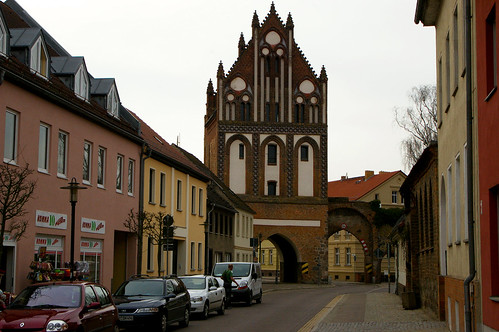
the powder tower (built around 1500):
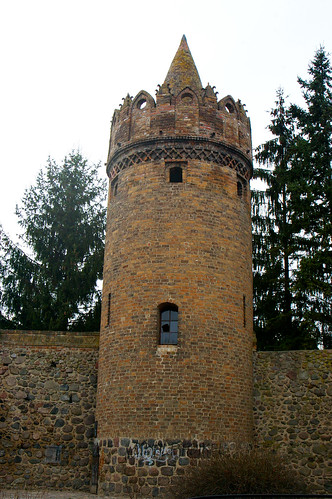
and the Franziskan Cloister church ruins (built in the 1300’s):
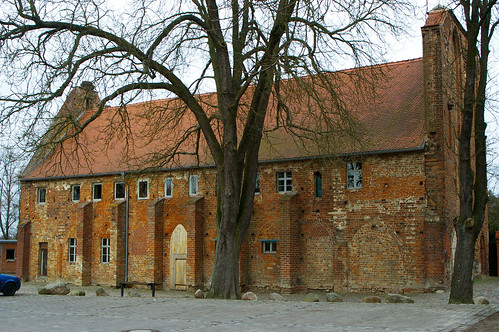
Why is it so preserved? Because the entire city wall area that remains (outside part) is surrounded by about a 1 acre wide park with bicycle paths and play areas for the kids – which means that it’s become usable recreational space – instead of a hindrance to people and traffic (which is what encourages them to be dismantled):

The thing is, though, that after parking the car and getting out to head to the local museum (housed in the oldest church in town):
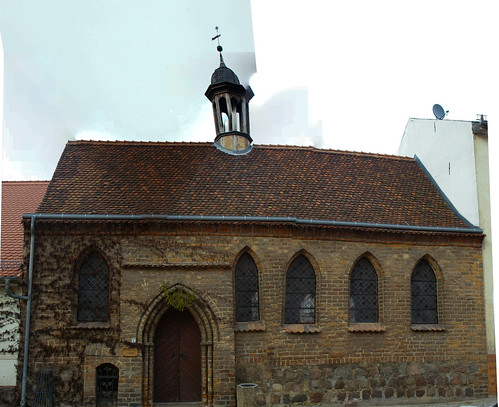
We were ass-aulted. Literally. There was this horrible noxious scent of ammonia base that just became stronger each and every time the wind blew. It almost made you sick to your stomach, and you didn’t want to dare open your mouth to speak – lest the taste of ammonia based SHIT invade. Promptly covering my face with my t-shirt, I said “UGH! Chicken Farms!!”. It’s true. There are apparently chicken farms nearby – but where at, I don’t know – other than within smelling distance.
Upon snapping the few pictures above, Michael and I dashed into the historical museum (which smelled delightfully old and musty), checked out a couple of things inside there (they were closing for the day) and headed back out into the pungent town again. To say the least, the scent hadn’t abated (I think it actually had grown), and we were thankful this is a VERY.SMALL.TOWN. We hit a few more local highlights, walking quickly, holding our breath and alternately breathing through our shirt/hand/scarf. We paused to take a picture of the town square with its monument to the Prussian Princess Louise (she died nearby and the body was carried through town in 1810):
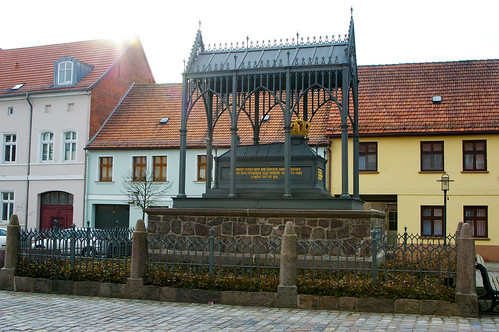
a couple of the local signs that I found interesting (very retro – maybe from the 1950’s?) -:
The first being a butcher’s and the second being a “household appliances” store -and then got the outside of the local church (St. Marienkirche):
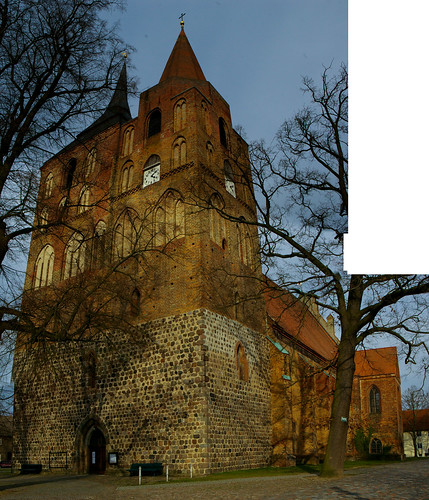
I then couldn’t take it anymore, and I begged to go inside (for fresh, cool, ancient incense smelling air) to make a couple photographs of the stained glass entry:

and the center aisles.
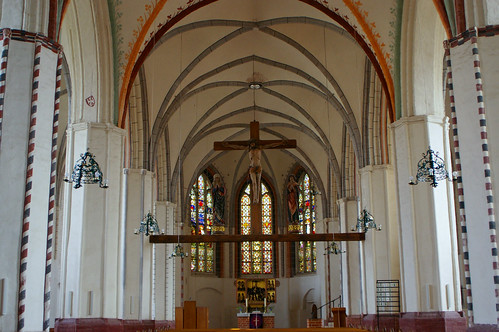
When the church closed to visitors (5 minutes wasn’t enough other than for me to just get the stink out of my nose before having to fill it up again), we nearly ran back to the car. (And believe me, we weren’t the only ones – even the towns people seemed to be racing about ducking inside for some non odor-filled air.) All I can say is that the town was neat, and I liked the idea of how they used their ancient city walls – but OH MY GOD, What the HELL is that SMELL? Even weeks later, as I write this, it is the one thing I remember most about Gransee … shame, that! (Notices that as she types the blog, she has been repeatedly rubbing her nose at the thought of the town… ah.. strange associations!)

